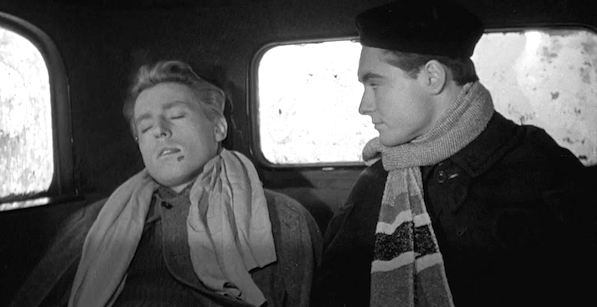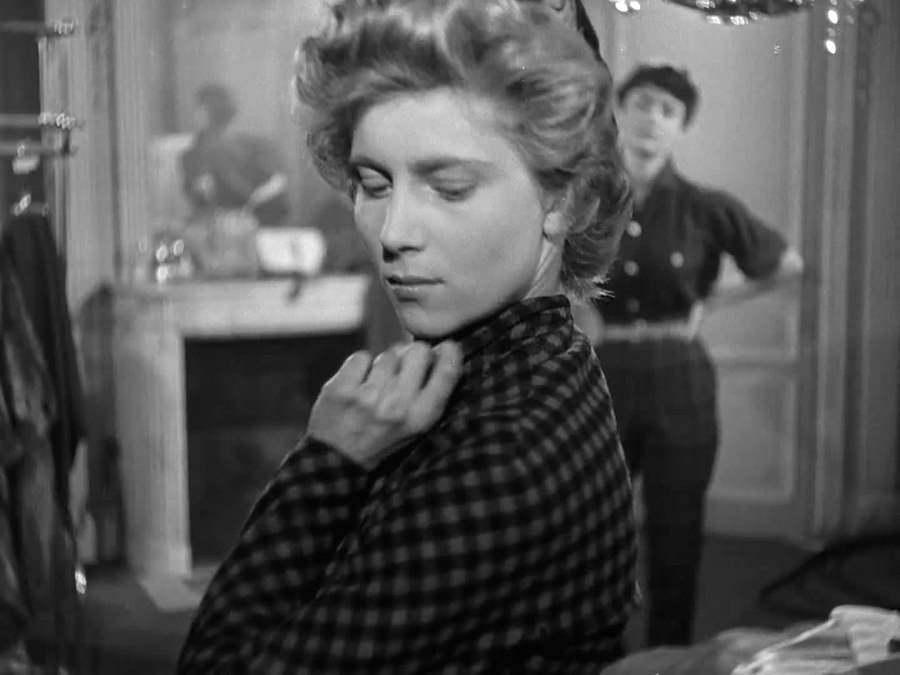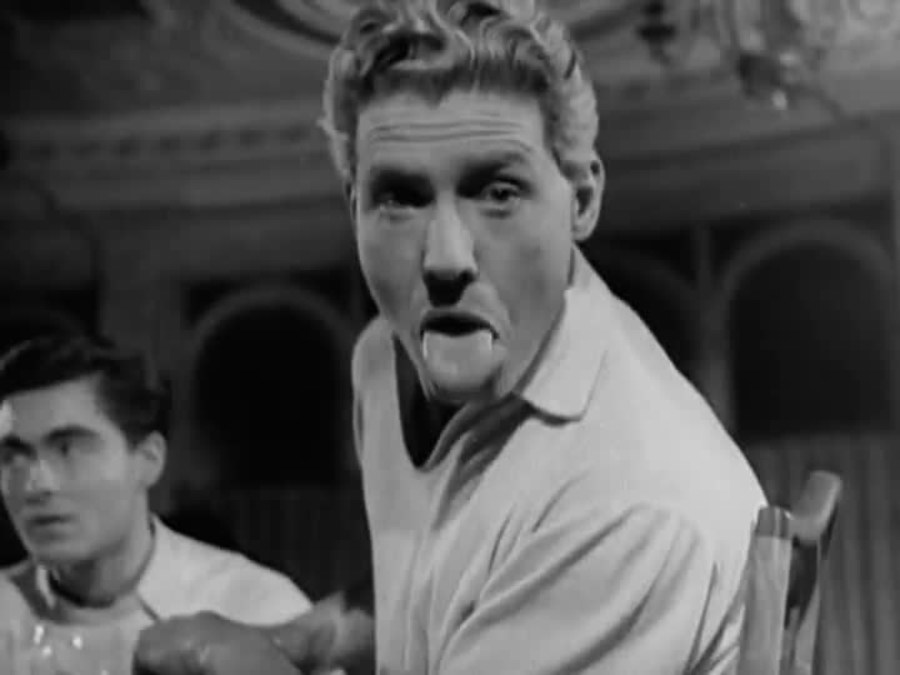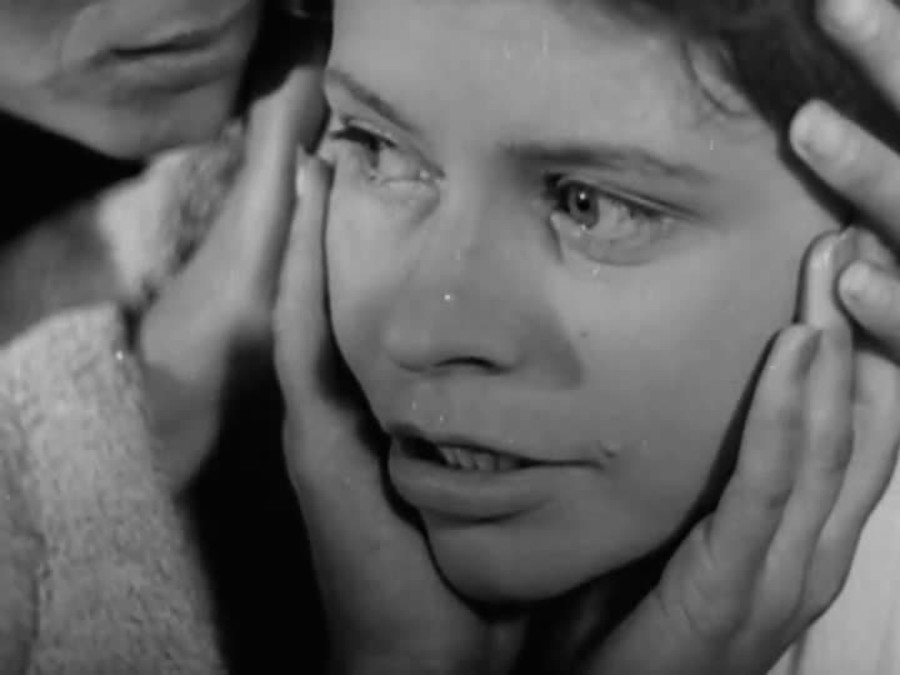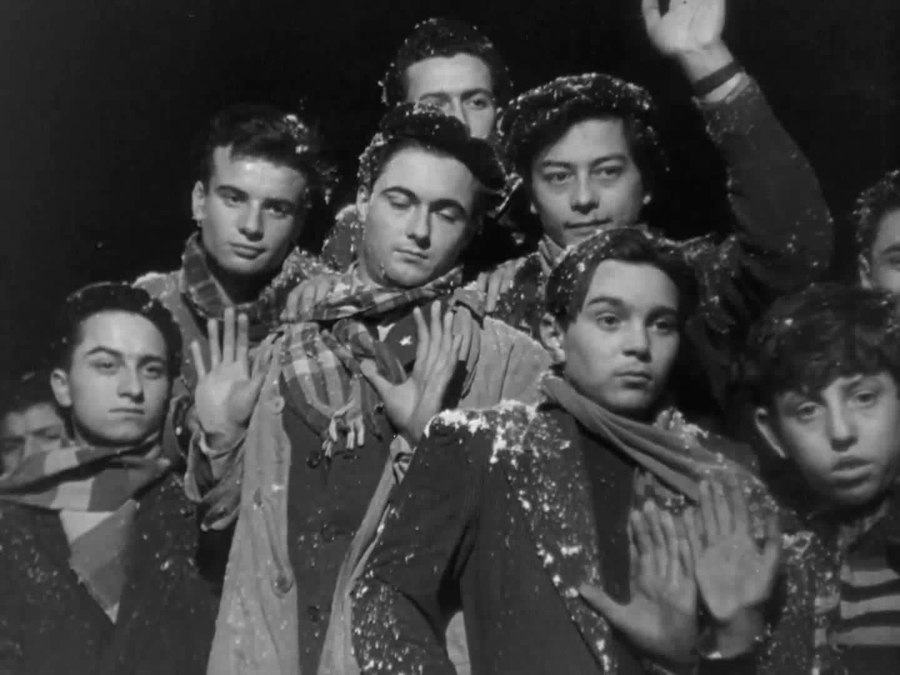History tells us that the collaboration between Jean-Pierre Melville and Jean Cocteau was neither easy nor sweet. “Before, we were brothers; during the shooting, we couldn’t stand each other,” said the director. Unlike his debut feature, Le silence de la mer (1949)—where he adapted Vercors’ novel with great fidelity but also in total independence and freedom—here, the more collaborative nature of the project (the screenplay was written by Cocteau himself from his own text) prompted many discussions, some concerning contractual obligations (such as the imposition, against Melville’s will, of Cocteau’s protégé Édouard Dermithe to play the protagonist, Paul), and several compromises or concessions from both sides in order to achieve a result that was acceptable for all involved. However, if Les enfants terribles is today such a fascinating film, full of impossible contrasts and gifted with a sumptuous eccentricity, it’s also (at least in part) thanks to these artistic disagreements.
It was Cocteau who, after having watched Le silence de la mer, approached Melville and asked him to direct a film adaptation of the novel. It is not difficult to see why the project caught the director’s attention: the story of these two teenage siblings who barely abandon their rooms fits perfectly with the extremely self-enclosed universes typical of Melville’s noirs and Resistance films: microcosms folded onto themselves, with their own rules, that repel any contact with the exterior. In Les enfants terribles, this world is shaped within the quintessential teenage space: the walls of a shared bedroom. It is a sanctuary packed with absurd objects that the protagonists collect, re-appropriate and venerate, like natural born surrealists. Paul and Elisabeth (Nicole Stéphane) build an island governed by perverse games and rituals.
Melville shoots the interiors of this movie with a truly architectural eye. When the characters visit a new house, the camera reveals to us the magnificent, empty spaces of an abandoned palace that we discover alongside the group that marches through endless stairs, corridors and chambers. Melville engineers remarkable solutions for filming the protagonists’s bedrooms. His pans and overhead shots, for instance, are never merely descriptive: introduced at the least expected moment, they always enhance the emotional and dramatic dimension of a charged space. Long before the blooming of the teen movie as a genre, Melville already instinctively grasped the cinematic potential of this intimate location of the bedroom.
The hyper-expressive, gestural work of the actors, the declamatory delivery of the dialogues, and the passages of voice-over narration (read by Cocteau himself) seem to be at the antipodes to the hieratic, minimal underplaying for which Melville is best known today. He was, however, never entirely foreign to this extremely theatrical and literary effect: he fully explored it in his even more radical chamber piece, Le silence de la mer, and used it, more sparingly, in several of his later films. Some fans of the golden period of Melville’s filmography tend to be bothered by the highly exaggerated, histrionic performances in Les enfants terribles, but this interpretive style has enormous coherence in a film where characters are always immersed in their own theatre, literalizing their emotions in a permanent competition, enacting and exteriorizing feelings through the roles they have invented for themselves.
Melville takes advantage of all this hyperbolic pathos in order to conceive an extraordinary sound design. The fighting between Paul and Elisabeth is often expressed through their voices, through highly dramatic intonations punctuated by brusque pauses of silence—like waves that grow and explode in an abiding, violent flow. Cocteau’s poetic work with rhythm, repeated words and chains of enumerations becomes especially hypnotic when mixed with other sounds and voices, with echo effects and with the classical music featured in the film. The extensive use made of different parts and arrangements of two pieces by Bach and Vivaldi is, quite simply, superb: the music not only interacts with the dialogue and narration, but also with the mise en scéne and editing, thus forming a magnificent choreography of movement, action and emotion. This harmonic polyphony, always reaching a crescendo, absorbs spectators and carries them, effortlessly, right inside the world of the film.
Of course, this trance of hypnotic incantation has extreme importance in a movie that, like most Melville’s works, is all about personal magnetism and power games. In this sense, Les enfants terribles spells out what the rest of his filmography tries to keep as a generative but hidden force: the relationships between the heroes and other characters (male partners and female lovers alike) is always sustained by the exercise of control and calculation. Here, Nicole Stéphane plays a deformed variant of the hyper-cerebral killers and thieves incarnated later by Alain Delon or Jean-Paul Belmondo. She also builds a seductive shield of rehearsed detachment and, like them, she’s given an operatic, grand finale that is the equal of those featured in Le doulos (1962) or Le samouraï (1967).
The confrontation between Dargelos (Renée Cosima) and Paul at the start of Les enfants terribles is the kind of fateful encounter that usually sets Melville’s films in motion. Here, however, the encounter between these two schoolboys is charged with a Cocteauesque, poetic and symbolic homoeroticism much less ambiguous than in other Melville films: Dargelos throws a snowball that hits Paul’s chest and, immediately, he faints as if Cupid’s arrow had pierced his heart. This act of violence marks the birth of an amorous obsession and, from that moment on, Les enfants terribles operates entirely through this type of displacement, substitution, or superimposition: Dargelos’s face finds its mirror in Agathe (both characters played by Cosima); Paul’s intense, queer crush collides with the latent, incestuous relationship experienced with her sister; and the original room shared by the siblings is eternally reconstituted in other places—such as the house that the group of characters inhabit like modern squatters, living all together in a chamber until they’re tired of it, deciding to move on to another…
Both highly domestic and magically devilish, the primal bedroom built and rebuilt by these two siblings attracts other characters, but never truly belongs to anybody else: it’s the space of a teenage daydream that Paul and Elisabeth occupy, dressed in their bathrobes, lying in messy beds, where the smells of death and sickness mix with those of an unconsummated sexuality. Finally, anyone else is just an insignificant puppet in a fantasy created by the enfants. A fantasy woven with suffocated, feverish desires that are always masked, disguised, and dramatized as in a Greek tragedy.

